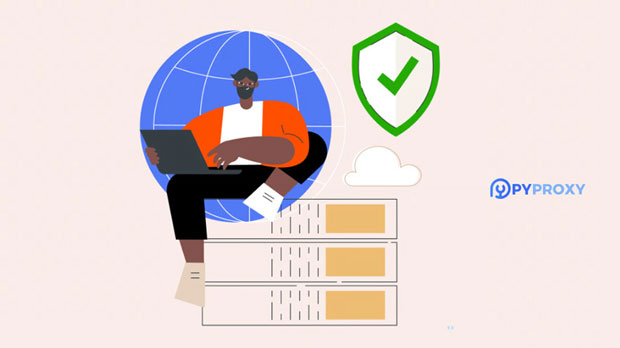How to choose the right Socks5 proxy service provider?
When selecting a socks5 proxy service provider, it's important to consider several key factors that ensure security, performance, and value. A Socks5 proxy offers higher flexibility and anonymity compared to standard HTTP proxies, making it ideal for a wide range of applications, including web scraping, online privacy, and bypassing geo-restrictions. However, not all providers offer the same level of service, and making the right choice can significantly affect your online experience. This guide will break down the most critical aspects of choosing a Socks5 proxy provider, such as reliability, speed, security features, support, and pricing, to help you make an informed decision. 1. Reliability and Uptime GuaranteeOne of the first factors to consider when choosing a Socks5 proxy provider is reliability. The last thing you want is a proxy service that experiences frequent downtime or unreliable connections. Whether you're using a proxy for browsing, data scraping, or streaming, consistent uptime is essential for uninterrupted performance.Look for providers that offer a service-level agreement (SLA) or a clear uptime guarantee. An SLA typically outlines the minimum level of service you can expect, such as 99.9% uptime or higher. Additionally, review user reviews and feedback to gauge the provider’s actual performance. Real-world experiences from other users can offer a clearer picture of the service’s reliability.2. Speed and PerformanceSpeed is another crucial consideration when choosing a Socks5 proxy service. Slow proxies can significantly affect your online activities, from loading web pages to performing high-demand tasks like data scraping or torrenting. Look for a provider that offers fast and stable connections, ideally with servers in multiple regions, so you can choose the one closest to your location for the best performance.Some socks5 proxies can cause latency or packet loss due to poor server infrastructure or overload. Opt for providers that offer low-latency connections and fast response times. Many top-tier providers offer speed tests or provide performance data to give you a clearer idea of what to expect in terms of connection speed.3. Security and AnonymitySocks5 proxies are often used to enhance anonymity and privacy online. Unlike HTTP proxies, Socks5 proxies do not modify or analyze the traffic being sent through them, which makes them more secure and harder to trace. However, not all Socks5 proxy providers prioritize security in the same way.To ensure that your data remains private, choose a provider that offers strong encryption protocols, such as SSL or TLS. This adds an extra layer of protection, especially if you are using the proxy for sensitive activities, such as accessing restricted content or conducting business transactions. Additionally, ensure the provider has a no-logs policy, meaning they do not track your activity while using their proxies.4. Global Server CoverageThe geographical location of a Socks5 proxy’s servers can impact both speed and functionality. Depending on your use case, you may require proxies located in specific countries to bypass geo-restrictions or access localized content. A good Socks5 proxy provider should offer a wide range of server locations around the world, including popular regions like the US, Europe, and Asia.For instance, if you need to scrape data from websites in Europe, choosing a provider with multiple servers in the EU will ensure better speed and reduced latency. Additionally, some providers offer rotating proxies, allowing you to switch between multiple IPs in different countries for better anonymity and security.5. Customer Support and ServiceCustomer support can play a pivotal role in resolving issues with your Socks5 proxy service. Whether you encounter technical problems, need help setting up the proxy, or face issues with performance, a provider with responsive and knowledgeable customer support can make all the difference.Look for providers that offer multiple support channels, such as live chat, email, or phone support, and check for their responsiveness. Ideally, customer support should be available 24/7 to address any issues that may arise. Furthermore, it’s always beneficial if the provider has a knowledge base or FAQ section on their website to help you troubleshoot minor issues on your own.6. Pricing and Payment OptionsPricing is an important factor when selecting a Socks5 proxy service, especially for businesses or individuals with ongoing needs. While cheaper options may seem attractive, they often come with limitations in terms of speed, security, and support. It’s essential to strike a balance between cost and quality.Check if the provider offers flexible pricing plans based on your needs, such as pay-as-you-go, monthly, or yearly subscriptions. Some providers may also offer trial periods or money-back guarantees, allowing you to test their service before committing to a long-term contract. Make sure to understand the full pricing structure, including any potential hidden fees, before making a decision.7. Compatibility and Ease of UseA good Socks5 proxy service should be compatible with a wide range of devices and applications. Whether you need to use the proxy on a Windows PC, Mac, Android, or iOS device, the provider should offer support for these platforms. Additionally, ensure that the service works with the specific tools or software you plan to use, such as web browsers, VPNs, or web scraping tools.Ease of use is also important. A user-friendly control panel or dashboard that allows you to easily manage and configure your proxies can save you time and effort. Look for services that provide detailed instructions or setup guides to help you get started.8. Transparency and ReputationTransparency is a key characteristic of a reliable Socks5 proxy provider. A reputable provider should be clear about their policies, pricing, and data management practices. Look for providers that publish detailed privacy policies and terms of service, so you know exactly how they handle your data.Before making a decision, research the provider’s reputation in the market. Look for online reviews, independent comparisons, and any certifications or partnerships that demonstrate their trustworthiness. A provider with a strong reputation is more likely to offer consistent and reliable service.9. Extra FeaturesSome Socks5 proxy providers offer additional features that may be beneficial depending on your needs. For example, advanced features like proxy rotation, automated IP switching, or integration with VPNs can add an extra layer of security and flexibility. These features are particularly valuable for businesses or individuals who need to access data at scale or maintain high levels of anonymity.Consider your specific requirements and look for providers that offer these extras if they align with your use case. However, keep in mind that more advanced features may come at an additional cost.10. Legal and Ethical ConsiderationsBefore choosing a Socks5 proxy provider, it's crucial to ensure that you are using the service in a legal and ethical manner. While proxies can help bypass geo-blocks and protect your privacy, using them for illegal activities or to violate the terms of service of other platforms can lead to serious consequences.Ensure that the provider you choose operates within legal boundaries and encourages ethical use of its services. Be aware of local regulations and ensure your use of the proxy does not infringe on any laws or rights.ConclusionChoosing the right Socks5 proxy service provider requires careful consideration of various factors, including reliability, speed, security, and customer support. By focusing on these key aspects and evaluating providers based on your specific needs, you can ensure that you select a service that will offer optimal performance, privacy, and security for your online activities. Always conduct thorough research, read user reviews, and test the service before making a long-term commitment. With the right provider, a Socks5 proxy can enhance your internet experience, making it more secure and flexible.
2024-12-23

























































